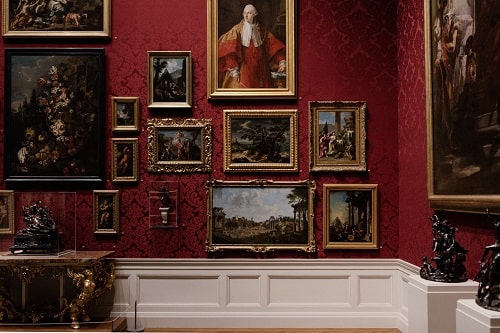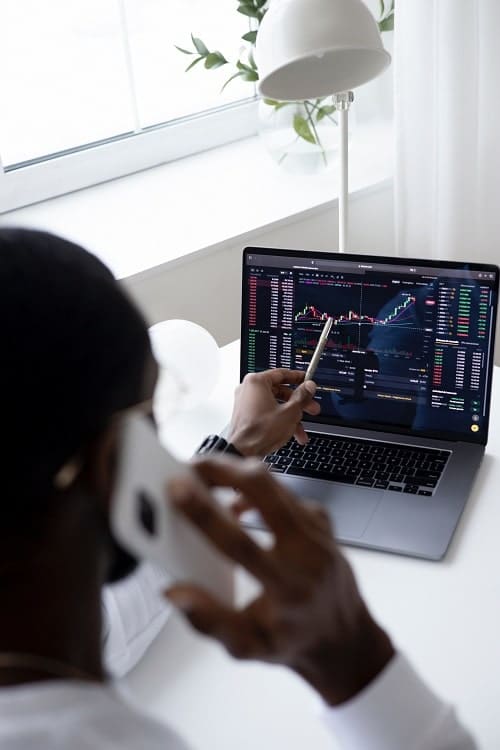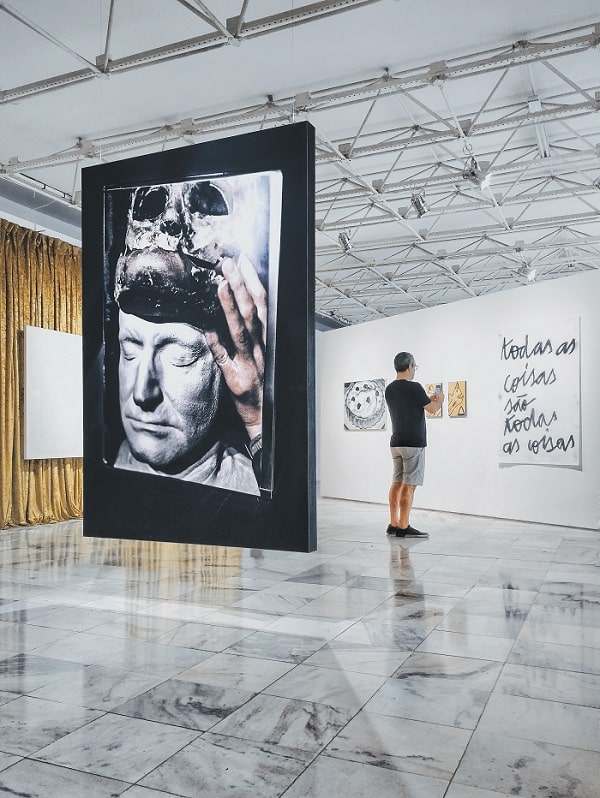Ever wonder who an art collector is and how to get started? Look no further.
We’ll discuss amateur and professional art collectors, including some of the most famous collectors globally, holding collections worth billions of dollars.
We’ll also look at some of the new ways of holding art, that don’t necessarily make you an art collector.
Do you think starting a collection might make sense for you? Here is our art collectors guide.
Who Is Considered an Art Collector?

In simplest terms, anyone who owns multiple pieces of art could be considered a collector, but if you’re reading this article, you’re probably interested in learning more about who the people that intend to be art collectors are. First of all, art holdings need to be somewhat rare. If you’ve ever been to an office that was decorated on a budget, you may have seen one of many Ikea prints that are everywhere. Owning one of these does not make you an art collector.
We’re really talking about people who buy original or rare pieces and have an interest in the story of those pieces. Art collectors often purchase in one or multiple themes which could include artists, art movements, subject matter, or other ways that one piece of fine art may be related to another within the same collection. There is often intentionality to what is being added to an art collection.
While many art collectors are doing it for personal satisfaction and not economic gain, others such as Charles Saatchi, Larry Gagosian, and others have made a very healthy living out of collecting art and selling certain pieces once they have appreciated in value, making them art dealers as well.
Who has the largest private art collection in the world? The Guinness world record list believes they know the answer, but is that the most valuable private art collection? Perhaps not. With certain “elite” artists, prices have gone astronomical, even spurring a new form of art investment where you can own a fraction of a masterpiece.
Is Everyone Who Buys Art an Art Collector?
With 2022’s economic turmoil including a bear stock market, investors seem to be unloading more speculative holdings in real companies, but also in assets like cryptocurrency and NFTs. In the popular media, you would think that someone buying Bored Ape, Crytopunks, Cool Cats or other popular NFTs is an art collector. Unfortunately, there’s a fundamental misunderstanding. NFTs are not and do not contain art, so it would be fair to say someone who owns NFTs is an NFT collector. As for the private enjoyment that traditional art collectors get from their holdings, that also doesn’t seem to be present. In terms of the supply and demand for NFTs, the market is “100% based on greater fool theory” according to Bill Gates.
Another emerging method of buying art without becoming an art collector is to give money to a fractional art-buying firm like Masterworks or through a specialist in “alternative investments” like Yieldstreet. Much like you would give money to a hedge fund manager or stock broker to invest for you, you can invest in very expensive pieces as a co-owner, perhaps among thousands. In essence, you’re putting your trust in the firm to choose pieces that you hope will appreciate in value, so that you can then withdraw your principal and gains in the future. This approach is an option for someone who wants to invest in art without developing any expertise. Unfortunately, you’re not building a collection of art or getting the enjoyment of individual ownership, so we wouldn’t qualify these investors as art collectors.
Beyond these emerging art investment plays for individuals, institutional investors have been purchasing art with a high potential for appreciation in value for a long time. Banks, universities, and other large entities use art consultants and buyers to choose works for their investment portfolios but without any strong intent to enjoy the pieces other than from a financial perspective.
Lastly, museums compete with wealthy art collectors for certain pieces. They’re typically using donated money from other wealthy art connoisseurs to purchase pieces. Cornerstone pieces, the ones that are viewed as potentially bringing patrons in the door on their own, fetch the highest prices.

Is an Art Collector the Same as an Art Buyer?
There is a difference between an art collector and an art buyer.
Art collectors come in many shapes and sizes ranging from low-budget hobbyists interested in local works to billionaires decorating mansions and loaning works to museums. Being an art collector is not a profession by definition. There are art collectors that make their living off of trading art, however. There are various reasons why art collectors decide to buy art and may use an art buyer.
Unlike being an art collector, being an art buyer is a profession. A quick search on LinkedIn for “art buyer” returns 39,000+ results. You’ll find art buyers working for high-net-worth individuals, casinos, hotel chains, museums, and other entities with sufficient capital to spend on art such that having a specialist employee or contractor to assist makes sense. The employers of art buyers typically have many pieces with combined multi-million dollar valuations.
Art buyers typically have fine art degrees, know their way around the gallery and auction system, and are plugged into the art community so that they can potentially assist their client with purchasing a work that fits with the collector’s criteria as soon as it becomes available.
While art collectors are typically spending their own money on pieces of fine art, art buyers are usually working from a budget given to them by their employer and facilitate any purchases made by arranging for an exchange of their patron’s funds for the piece to be added to the collection. They’ll also likely make other arrangements such as arranging transportation to get the piece from the seller to its new home.
How Do You Become a Successful Art Collector?
For a hobbyist art collector, the test of “success” might be as simple as an emotional inventory after a few years of collecting. Does the fine art you have purchased still bring you joy? Then you are a successful art collector.
For those that are personally collecting art and treating it as a source of income, it’s really a question of profit on the appreciation of owned works. Much like real estate, stock, or other types of buy-hold-and-sell investments, you can start to determine your success if you are selling for more than you paid plus the value of your time spent on the endeavor. Like any class of investment, you don’t have to profit on every deal. Even the best stock-pickers get it wrong now and then, but if you have more winners than losers, you’ll make money and can consider yourself a financial success.
For art collectors at the pinnacle of the art world such as the ones referenced in The $12 Million Dollar Stuffed Shark, the threshold for success is a little bit different. Like top athletes, it’s about being one of the greatest of all time: the collectors that are invited to be in the room when a really rare piece goes on the market, for example.
If Sotheby’s and Christie’s want to sell to you because they know your ownership of a piece from a particular artist will drive up the price of other pieces by the same artist, you’re at the top of the art world.
If you haven’t considered yourself an art collector prior to reading this guide, congratulations. You’re in fantastic company with others who understand the enjoyment of value that owning original art brings.
Here at ETChster, we provide both free and paid art-collecting tools to a community around the world. You’ll find an elegant inventory tool for holding Etchings (our version of NFTs), perfect for documenting your collection. You can manage loans, track locations, simplify insurance, and many other tasks from any internet-connected device.

If you’re looking to grow your collection, you’ll find artists in your home country as well as nearly every major city globally. Simply search the community by style, price, or location.
You’ll also find access to helpful art collector resources at ETChster University and access to support from community members such as art appraisers or our team if you’re needing assistance with cataloging your art collection.

